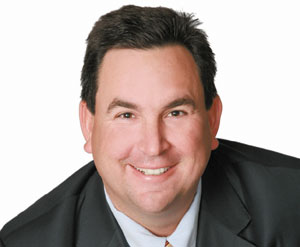Is the glass half full? The Federal Reserve has committed to
buying $600 billion worth of Treasury bonds between now and June,
and it wants to purchase up to $900 billion in debt by the end of
September 2011.
Is the glass half full? The Federal Reserve has committed to buying $600 billion worth of Treasury bonds between now and June, and it wants to purchase up to $900 billion in debt by the end of September 2011.
This second round of quantitative easing has been dubbed QE2. In a nutshell, the effort would pour cash into the banking system to promote lending and inflation, and it has the potential to help stocks, the housing market and consumer spending.
Or is it half empty? Some economists are worried about the impact of this tactic. They fear it may create a stock bubble – an inflated equities market motivated by speculation and low interest rates instead of earnings. Likewise, some see a commodities bubble that could burst dramatically in the years ahead.
QE2 has already earned some prominent detractors. Bond market guru Bill Gross just called it “a Ponzi scheme” that will end the 30-year bull market in bonds (an event he has actually forecast for some time).
Jim Rogers, the Quantum Fund co-founder who astutely called the worldwide bull market in commodities in 1999, recently labeled QE2 “petrol on the fire” of the commodities market and told an Oxford University audience that Fed chair Ben Bernanke “does not understand economics … all he understands is printing money.”
Will more investors turn to stocks? The Fed’s bond-buying program implies lower long-term interest rates, lower bond yields and a weaker dollar.
In an environment with lower bond yields, investors are predisposed to enter other asset classes such as real estate and stocks. If the stock and housing markets improve, that will certainly aid consumer confidence, which, in turn, should aid consumer spending.
On Main Street, there are two speed bumps on the way to that rosy domestic outcome: a lack of customers and/or demand (especially in the housing market) and unemployment. The Fed’s strategy may have a tough time getting around those economic obstacles.
Why are other nations growing testy? QE2 could invite a trade war. A weak greenback means a big advantage for U.S. exports. Our products will be cheaper in other nations thanks to the increase in the money supply holding down the value of the dollar.
Correspondingly, imported goods will cost us more and we will buy less of them. That’s terrible news for nations such as China, Germany, Russia, Japan, France, Great Britain and Hong Kong – all of whom are counting on exports to aid in their economic recoveries.
If U.S. interest rates are too low for too long, investors may try the emerging markets and/or the commodities markets seeking higher returns. So the commodities markets and the emerging markets could get even hotter.
If that happens, it would imply higher prices for oil, crops and raw materials in the United States, which would hamper our economy. Of course, many analysts think the commodities markets will keep advancing with or without influences like QE2 – the ongoing condition is simply too much demand and not enough supply.
Is this the “Hail Mary” play? With interest rates so low and one round of bond-buying already in the history books, the Fed doesn’t have many options left to jump-start the economy. Here’s hoping its latest move gives the recovery more traction.










